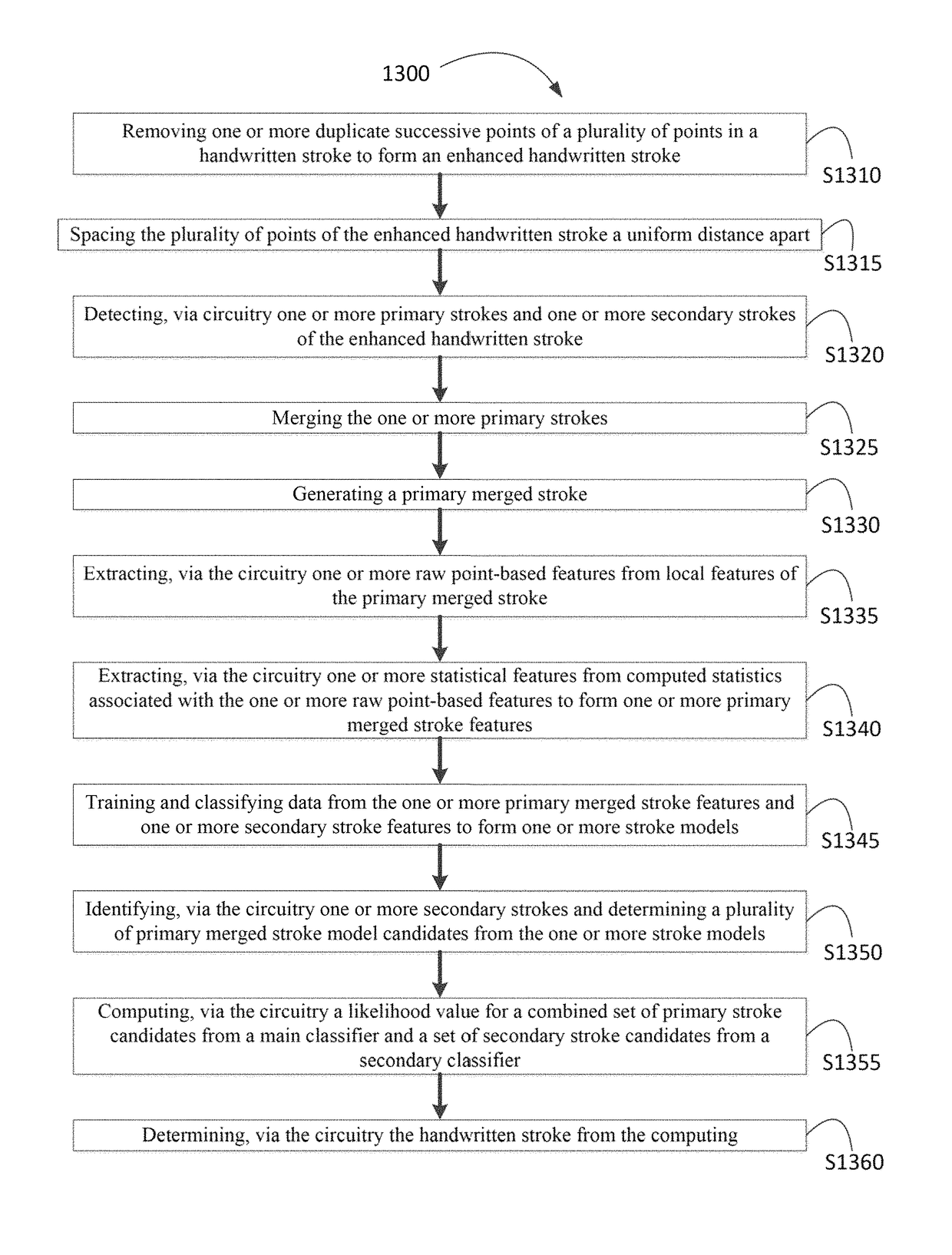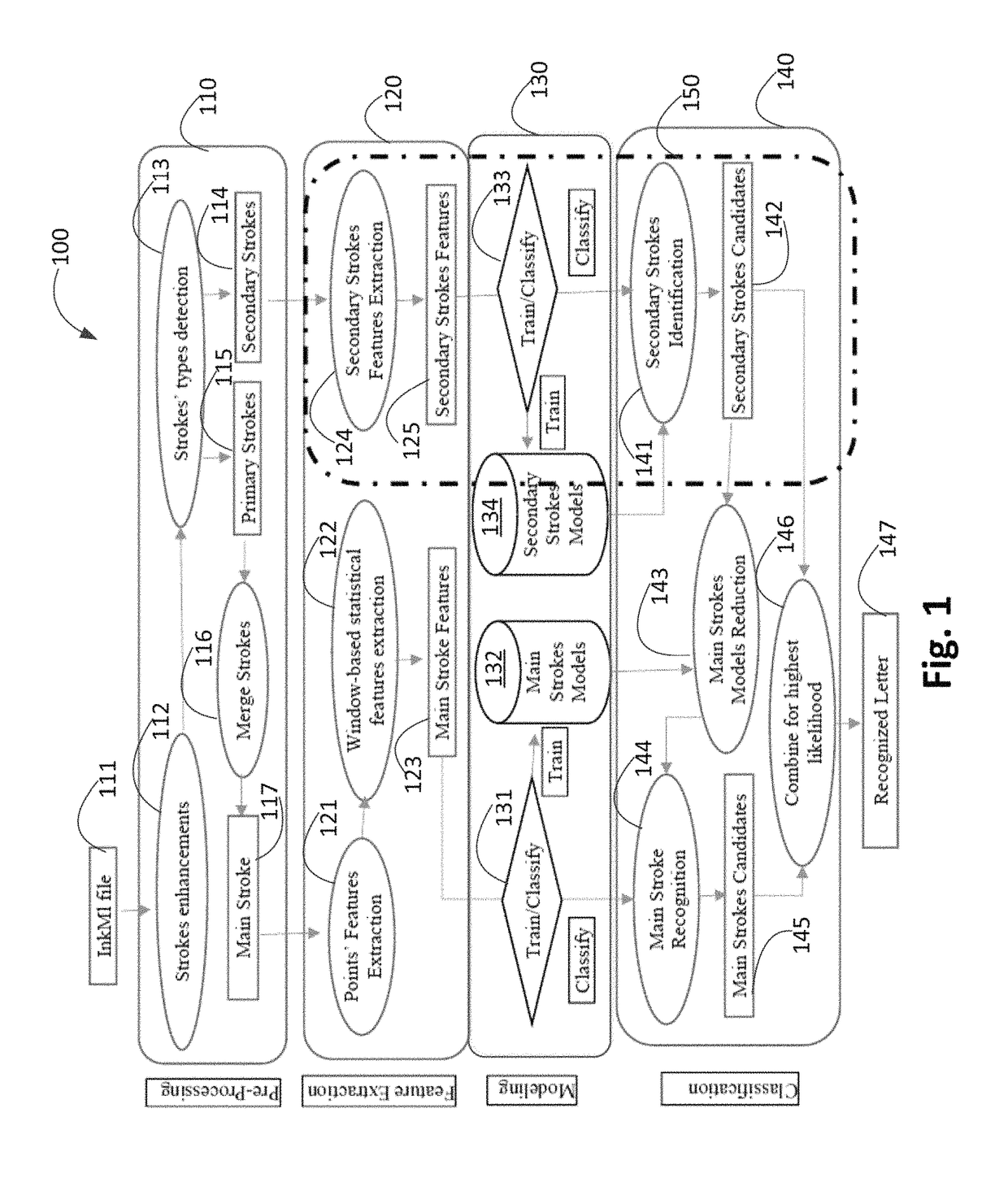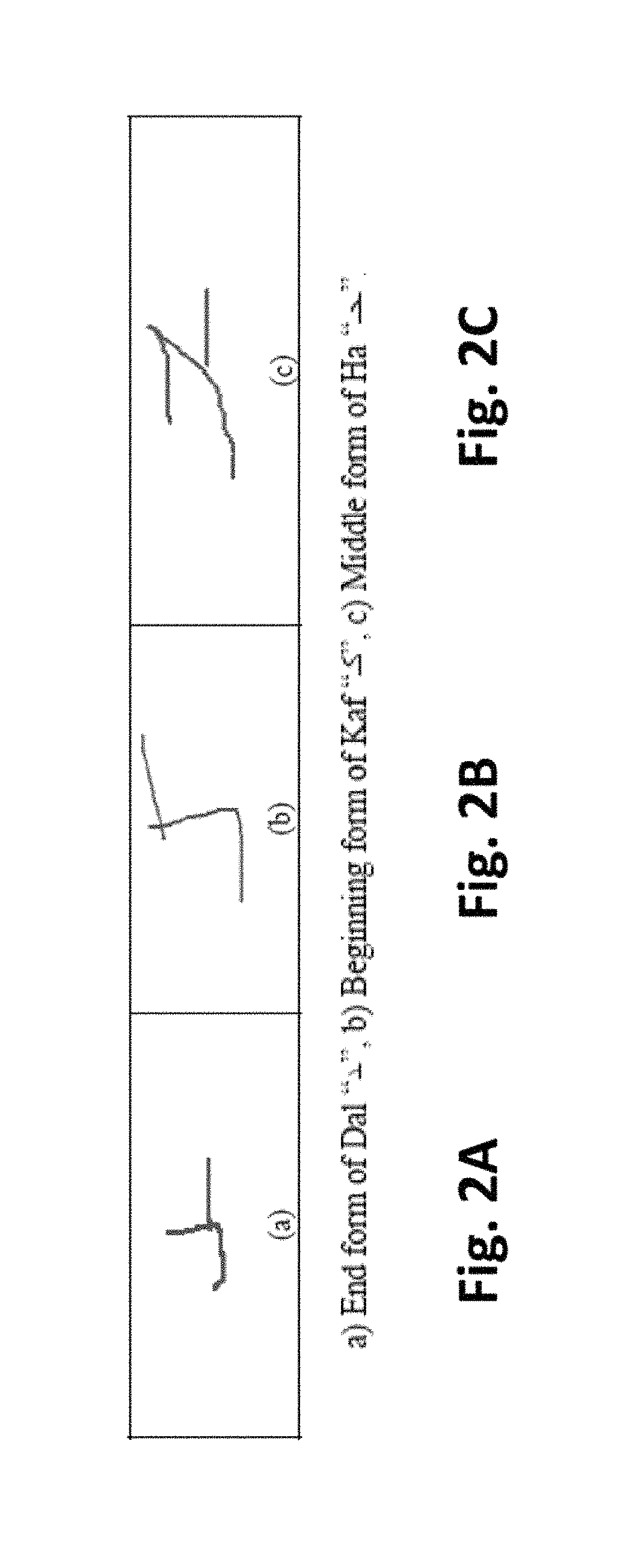Online character recognition
a character recognition and character technology, applied in the field of character recognition, can solve the problems of limited application, limited results, and difficulty in recognizing handwriting, and achieve the effect of improving overall performance and encouraging results
- Summary
- Abstract
- Description
- Claims
- Application Information
AI Technical Summary
Benefits of technology
Problems solved by technology
Method used
Image
Examples
Embodiment Construction
[0056]The following descriptions are meant to further clarify the present disclosure by giving specific examples and embodiments of the disclosure. These embodiments are meant to be illustrative rather than exhaustive. The full scope of the disclosure is not limited to any particular embodiment disclosed in this specification, but rather is defined by the claims.
[0057]It will be appreciated that in the development of any such actual implementation, numerous implementation-specific decisions need to be made in order to achieve the developer's specific goals, such as compliance with application- and business-related constraints, and that these specific goals will vary from one implementation to another and from one developer to another.
[0058]Handwriting recognition (HWR) is the automatic reading of handwritten information and converting it into electronic form. See Al-Badr, B., and S. Mahmoud. 1995. “Survey and Bibliography of Arabic Optical Text Recognition.” Signal Processing 41 (1)...
PUM
 Login to View More
Login to View More Abstract
Description
Claims
Application Information
 Login to View More
Login to View More - R&D
- Intellectual Property
- Life Sciences
- Materials
- Tech Scout
- Unparalleled Data Quality
- Higher Quality Content
- 60% Fewer Hallucinations
Browse by: Latest US Patents, China's latest patents, Technical Efficacy Thesaurus, Application Domain, Technology Topic, Popular Technical Reports.
© 2025 PatSnap. All rights reserved.Legal|Privacy policy|Modern Slavery Act Transparency Statement|Sitemap|About US| Contact US: help@patsnap.com



